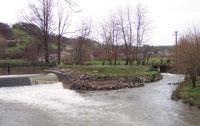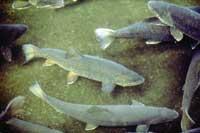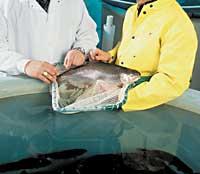Fishing as an alternative to fishing?
2002/01/13 Mendiburu, Joana - Elhuyar Zientziaren Komunikazioa
Although fishing techniques have been improved in recent years, the number of fish they catch has not increased. Why? One and one. The disproportionate fisheries of many years have emptied almost the sea that seemed inexhaustible. It is estimated that in 44% of fish stocks the amount that could be fished has already been met and in the other 25% are overfished. To fish like years ago, anglers need more and more sophisticated material and more time. In other cases, it is more harmful than overfishing catch fish that have not had time to reproduce. It is estimated that 25% of the fishing carried out by the use of hole nets too small does not have a regulated size for marketing.
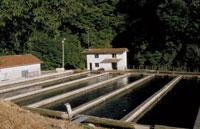
In some regions the situation is very serious and, if there is something to catch, we must use poisons that damage the entire ecosystem. And it is what is done, besides, without realizing that the ecosystem is only naked and sterilized for many years
The situation is really worrying, but experts say that it is still possible to recover the fish population by measuring fishing. But for this it is necessary to set quotas and, above all, respect them. However, it is surprising to see how nature reacts to pressures. Some fish have an extraordinary ability to adapt to new situations. Herrings, for example, become breeders in less time than before.
But what to do if fishing is reduced? Should we remove healthy fish from the menu? As mentioned above, to ensure fishing for long years would suffice to measure it correctly, but there is another solution, aquaculture. Although not as widespread as agriculture, it is an ancestral activity that can be a solution not to empty the sea, but also has its contras, especially if you look at the changes of recent years.
Nursery fish
According to all calculations, fish farming is an activity of more than 2,000 years. This activity began to develop in the east, but spread to Europe for the Middle Ages. In the 1970s, techniques were developed and, in addition to the tent, salmon and trout crops were launched in Norway and Scotland. Currently, in addition to cultivating sea bream, sea bass, turbot and other fish, algae, mussels, clams and oysters also grow.
Every year 100 million tons of marine products (fish, crustaceans and clams) are consumed, of which a tenth correspond to fishing productions. China is the main producer. However, it should be noted that freshwater capture is much more widespread and technically more controlled, so much more freshwater fish is produced than sea fish.
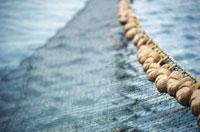
Fish farming is an industry with high demands on water quality, but paradoxically it generates a large amount of waste (food waste and animal excretions), which makes it a great pollutant. However, in addition to these residues, fish farming has another negative part, although less evident, but dangerous: the flight of fish. These fish can pose a risk to wild species, especially if genetically modified fish are used for breeding.
For the moment, for faster growth, some species of fish are manipulated, but not genetically. The aim of these manipulations is that the fish do not have a breeding phase. To do this, the eggs are subjected to sudden changes of pressure or temperature, so that the fish that are born from them are born triploids. That is, instead of having two pairs of chromosomes in the cell, these fish have three. Thus, fish are sterile and do not consume energy to develop their reproductive organs, which leads them to grow everything they eat. Trout is one of the fish species sold.
In the case of oysters, another advantage would be the production of triploids. Oysters remain in the reproductive phase during the summer and, at that time, have a very unappetizing mucous. Triploid oysters would be edible throughout the year. However, triploid oysters are not yet produced, as many believe they would lose their fame.
Genetically Modified Fish
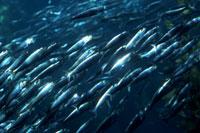
The breeding process of many fish species is very long, especially from the point of view of the breeder, so the goal of many is to shorten the growth period. Therefore, in this industry a long way of genetics is also foreseen.
The first genetic manipulations with fish suitable for cultivation have aimed to introduce a gene responsible for the growth of man or another animal. The experiences have been made with tents, salmon and trout and, in principle, the results have not been as satisfactory as expected: these fish, despite their rapid growth, presented unattractive malformations for marketing.
But scientists are stubborn and did not completely rule out the idea of genetic transformation. Canadian researchers came up with manipulating the salmon breeding gene and, after several tricks, bingo! Salmon grow twice as fast! The law has not yet allowed the commercialization of genetically modified fish, but the legislation soon adapts to technological and scientific advances and soon we can see them in our menus.
Other aquaculture productions
Marine products are not just fish, and aquaculture does not exclude algae, mussels and seafood.
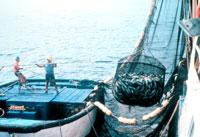
Most of the algae used and stored in European cuisine are used in the pharmaceutical and food industries. But in Asia the situation is very different and algae cultivation will be a future activity. Asia currently produces 2.5 million tons of algae.
Mollusks and shellfish are more rooted in the eating habits of these regions, so there is significant growth. Oysters and mussels are the ones that grow the most. In France, for example, around Arcachon and Ile de Ré, 148,000 tons of oysters and 64,400 tons of mussels are produced annually and 250,000 tons of mussels are produced in Galicia. They are high production products in the Pacific of scallops, clams from Japan and chiffons and prawns from all over Asia.
Although not usual, there is another production: that of the pearl oyster. It occurs in the Persian Gulf and in the northern Pacific islands and pearls end in the neck of the rich.
Published in the supplement Natura de Gara.
Gai honi buruzko eduki gehiago
Elhuyarrek garatutako teknologia



